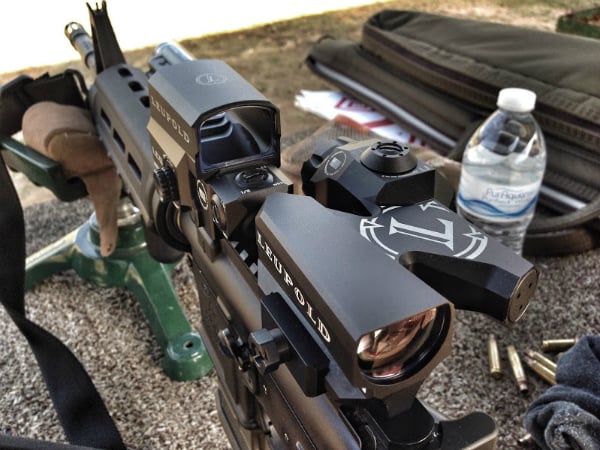
Last Updated on
By Kip Staton
Continued from: Leupold D-EVO/LCO Review – Part One: Overview
In Use
Despite all the hype surrounding the launch and initial sales of the D-EVO and LCO, there’s nothing really extraordinary about actually using them. Yes, there is the pleasant phenomenon of having both-sight-pictures-at-the-same-time, but at the end of the day… it’s just a red dot and a six-power scope.
However, one of the unexpected benefits that I found with the simultaneous sight pictures was the ability to get a rough hold on a distant target with the dot, then quickly snap my vision down to the magnified view to make the shot.
This made finding targets at any distance fast and easy, because the two scopes working together provide a “coarse” and “fine” view of the target and the surrounding area. This mitigates the somewhat limited field of view in the D-EVO and makes it a non-issue as far as I’m concerned.
I really wish there was something earth-shattering to say about using the D-EVO and LCO…but then again, wasn’t that sort of the point? To blend near and far engagements in a seamless, easy and drama free manner? Because it sure makes them that way.
Swapping views really is lightning fast. The whole thing is very good at exactly what it’s advertised to do.
The biggest downsides?
While the D-EVO and LCO are incredibly well thought out for the most part, there are a few places they could use some improvement. Most of the issues (perhaps unsurprisingly) lie with the new D-EVO.
Because the objective lens is hanging off the right side of the rifle, it’s completely obstructed when shooting closely around the left side of a barricade, or when using pretty much any vertical surface for field-expedient support.
That’s a big issue, especially for right-handed shooters. Of course, the LCO can still be used in these situations as a backup, but you lose the magnified option that the D-EVO conveniently provides in other circumstances.
This proved inopportune on more than one occasion, and this is the thing I dislike most about the D-EVO. I didn’t realize just how often I used a vertical support on the right side of the rifle until I put the D-EVO on. Many times, I braced the gun against a wall or post only to find that I couldn’t see anything due to a completely obstructed objective lens.
Oddly enough, this might be one of the first times that a mainline shooting product offers an unfortunate inconvenience that doesn’t really affect left-handers.
Regrettably, there’s no workaround for this problem. It’s a fact of life with the D-EVO, and one that can’t be fixed with more training. You don’t always get to choose what’s around to support the rifle in a three-gun match, or the real world for that matter.
And again, the very limited eyebox on the D-EVO took quite some time for me to get used to. I was glad to see that it wasn’t as big a deal as I feared it would be, but I would love to see this part of the scope improved.
As far as the LCO is concerned, I found very little not to like. As far as I can tell, the biggest “glaring” downside is that the dot is quite visible from the front of the optic. It’s a veritable beacon.
This downside might not matter to a three gunner working targets at 400 meters with a red dot, but could be very significant for users who would prefer to keep a low visual signature.
Frequently Asked D-EVO Questions/Objections
The D-EVO is certainly somewhat of a departure from what’s commonly seen in optics, that’s for sure. Many online authors have speculated and formed opinions (some good, some bad) about the D-EVO, and some general trends have formed.
I’d like to address some of the more common questions and objections that I’ve seen crop up.
Objection: The D-EVO looks really bulky and snag prone.
This is one of the biggest complaints that I’ve heard from people who haven’t even tried the D-EVO. I can assure you that this fear is largely overblown.
The D-EVO doesn’t stick out any further than a standard flashlight or other accessory mounted to the side of the rifle. It’s certainly comparable to a 3x magnifier that’s flipped to the side of the gun, in terms of bulk.
If we’re going to describe rifles as “sleek”, the AR-15 is certainly no M1 Garand. There are many perpendicular and oblique surfaces on the AR to begin with, and adding the D-EVO doesn’t make much of a difference either way.
It does take a little time to get used to the unorthodox scope body being “right there” on the rifle, but again, it turned out to be a non-issue. Peering into the ejection port does require canting the rifle over a few more degrees than usual, but again, this is a non-issue.
The way some bloggers carry on, you would think their primary shooting range is in the “loose product” area of a yarn factory. Snagging was just not that big of a deal for me in real world use.
I’m right handed, so it may be different for a left handed shooter who slings their rifle on the opposite side.
Objection: It’s heavier than an ACOG/RMR
Yes, it’s heavier than the standard ACOG/RMR combo we all think of. But remember, the D-EVO is a six-power.
By direct comparison, the Trijicon TA648 (the company’s 6x offering) tips the scale at a whopping 39.3ounces, not even including a piggy-backed RMR. The D-EVO/LCO come in at 22.7 ounces, weighed together. And the TA648 is simply enormous, especially when compared to the D-EVO.
But, for sake of discussion, let’s compare the D-EVO/LCO to the 17.0 ounce 4x ACOG and piggy-backed RMR combos of old. A common complaint about the ACOG/RMR was that the whole assembly sat very high, and required more of a “chin weld” than a cheek weld to use the RMR.
The D-EVO/LCO sits very low by comparison. It does stick out to the side quite a bit, as compared to the ACOG/RMR. But this isn’t a critical dimension. And obviously, the D-EVO and LCO fix the chin-weld issue like none other.
Certain 4x ACOGs have been criticized for poor eye relief. This may be true, but their eye relief is still better than the D-EVO in my experience. In theory, the 32mm 4x ACOG will do better in low light than the 20mm D-EVO. Point goes to the ACOG.
The LCO and RMR both have outstanding battery life, but the RMR is significantly smaller in terms of footprint. And the LCO’s dot is easier to use at distance. They’re both good dots, but the LCO is a much better choice for primary use.
Bottom line: The weight of the LCO/D-EVO combo is comparable to other products that do similar things:
- Aimpoint T1 with LaRue Mount/Aimpoint 6x magnifier: 18.9 Ounces
- Aimpoint M4/Aimpoint 6x magnifier: 22.2 Ounces
- Vortex Razor HD 1-6×24 with LaRue Tactical mount: 32.3 Ounces
- LCO and D-EVO: 22.7 Ounces together
And, if the D-EVO/LCO combo is still too heavy for you, remember: Nearly any red dot will sit in front of the D-EVO, including the best-in-class, lightweight Aimpoint T1.
Objection: This doesn’t really bring anything new to the table.
This is partially true. There are many existing scopes out there in the 6x range, and many 1x red dot sights as well (again, the ACOG/RMR comes to mind). However, there isn’t any combination of the two that lets you use both in practically the same instant, with the same cheekweld.
So, it does provide a new benefit. Especially because the LCO helps you locate the generalized area of distant targets before “zooming in” with the D-EVO.
Objection: It’s too expensive.
I really wish that dollar amounts didn’t have to enter into a product’s objective value. But, most readers don’t have an unlimited amount of disposable income, and so pricing will invariably be taken into account.
The D-EVO and LCO may be too expensive for many users, but…so are lots of things. I’m not a huge fan of discussions where prices are decried as being “too high” or “too low.” Certain price points may be wrong for certain individuals and what they value, but free market rates are largely determined by people who are both willing to buy and sell at an agreed-upon rate.
As long as we’re comparing things to Trijicon products, the LCO and D-EVO are priced in the same ballpark as the 1-6×24 VCOG. These are nice optics from Leupold, and high end glass isn’t cheap.
And the price is somewhat mitigated by the fact that you don’t have to purchase aftermarket mounts.
After all that, who is the D-EVO/LCO combo good for?
If you’re the kind of shooter that wishes you didn’t have to choose between near and far optics and fast access to either choice on a rifle that can shoot both near and far, you’re going to like the D-EVO and LCO a lot.
You get a true 1x red dot and a lightning quick switch to a 6x scope, in a relatively compact package that doesn’t extend fore or aft of a standard AR-15 receiver. That’s pretty remarkable.
I can see the D-EVO being very popular with three-gunners and other competitive riflemen, as well as hunters working in challenging terrain.
I have to only assume that the D-EVO would work well in certain very specific military applications, as that’s definitely not my wheelhouse.
Selecting the LCO would be a great decision if you’re in the market for a red dot, but I’m not going to pretend that it’s the only good option (or even the best option) out there. Definitely take a hard look at the LCO if your eyes have trouble with a red dot. It’s not perfect by any means, but in this regard it’s the best that I’ve used.
One thing that users planning on deploying the LCO for “serious” purposes might want to remember is that the dot is very, very visible from the front. And yes, the above photo is actually the front view of the dot!
Conclusion
This is an admittedly long review. Partly because it’s two optics in one, and partly because the concept behind how those two optics work together takes a bit of getting used to.
I wanted to give the scopes a fair shake, while addressing many of the questions and misconceptions about this unique system.
To sum it all up, let’s look at the simple facts:
- Using a red dot in conjunction with a fixed-power scope isn’t really anything new.
- What IS new here in the world of optics, however, is the fact that both sight pictures can be seen with zero head movement.
- The system works exactly as advertised, with a few minor downsides and several major benefits.
If you want a red dot with advanced features that’s easy to use with eyes that might not be quite what they used to be, the LCO is exactly what you’re looking for.
If you want the fastest transition possible between near and far target engagements, the D-EVO and some type of red dot (not necessarily the LCO) are exactly what you’re looking for.
I love the concept behind how the D-EVO is executed, especially after using a loaner Vortex Razor HD1-6×24 as my primary optic for a year. I never used that scope at 2x, 3x, 4x or 5x. The cat tail lever was either thrown completely to the left, or to the right.
The fact that the middle magnification ranges exist didn’t really matter; they’re just a function of how the scope works. The D-EVO and LCO take the best parts of variable magnification optics (high and low ends) and presents them in a simplified, user friendly format.
That’s a fantastic thing. But not nearly as fantastic as how I managed to make it through the whole review without mentioning any bands from the 70’s who wore funny red hats.

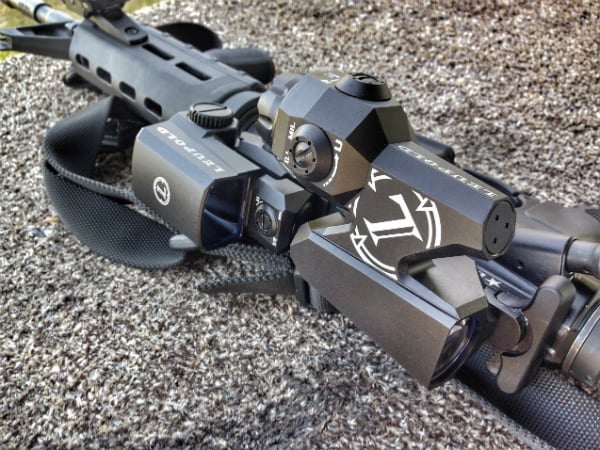
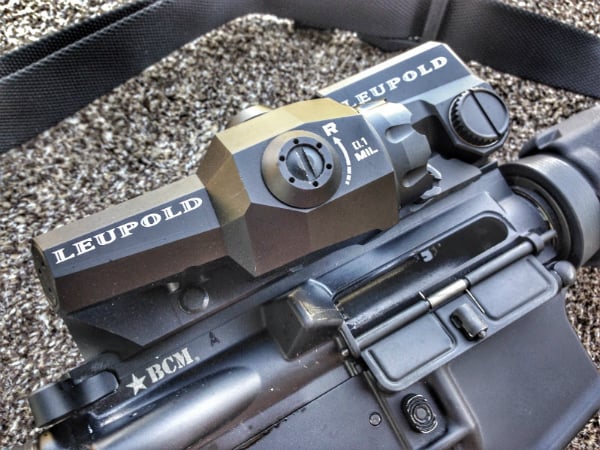
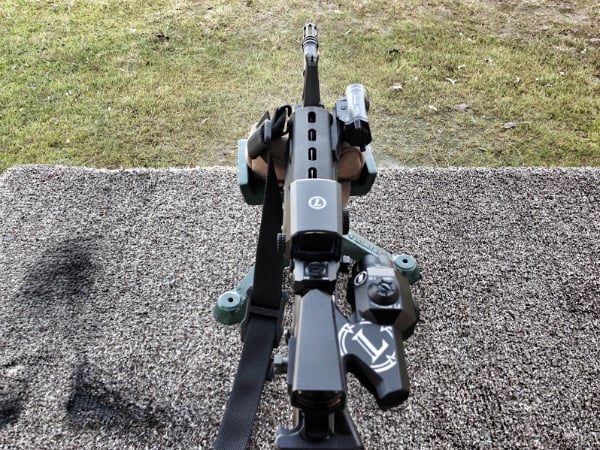
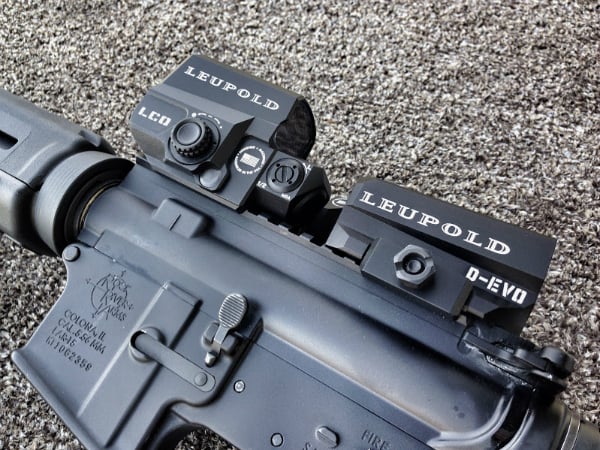
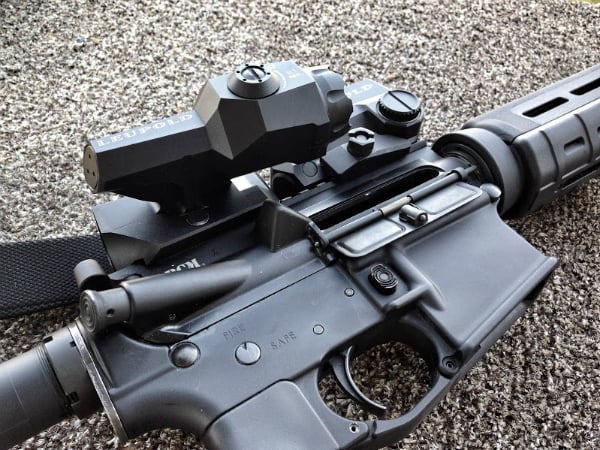





Leave a Reply